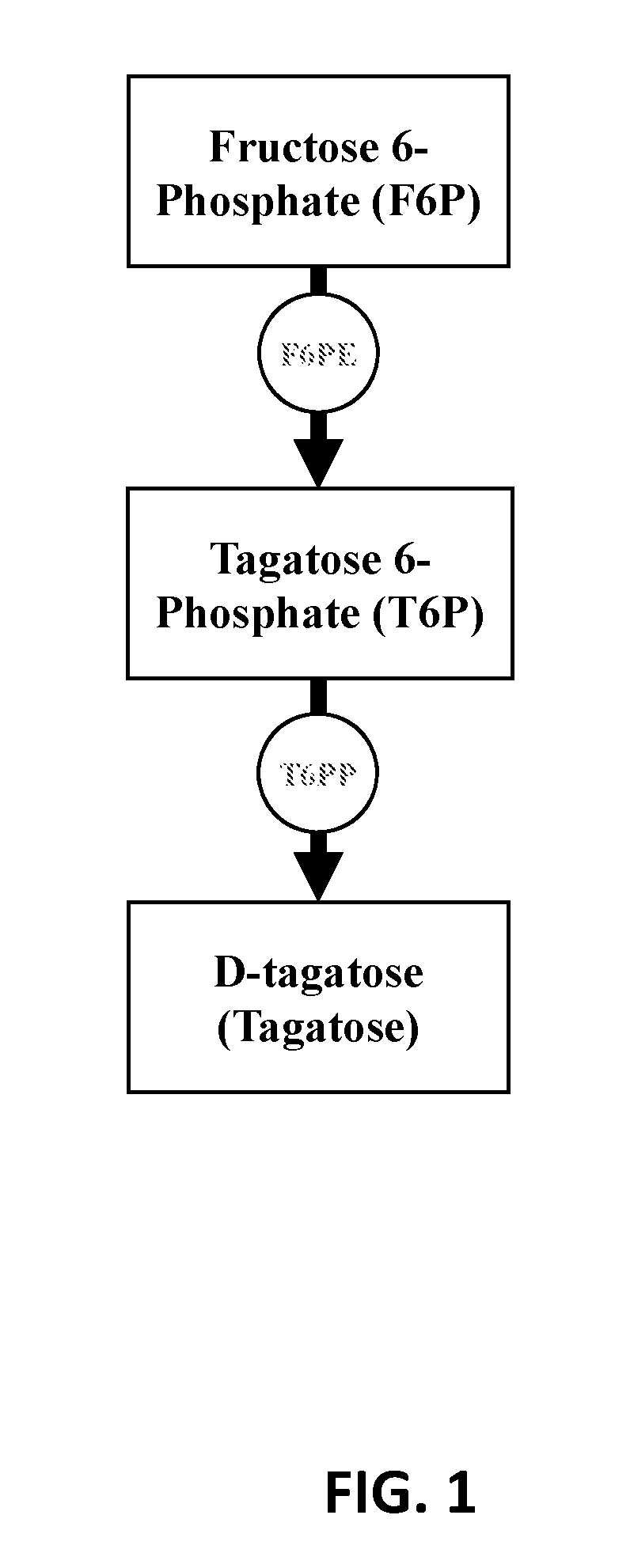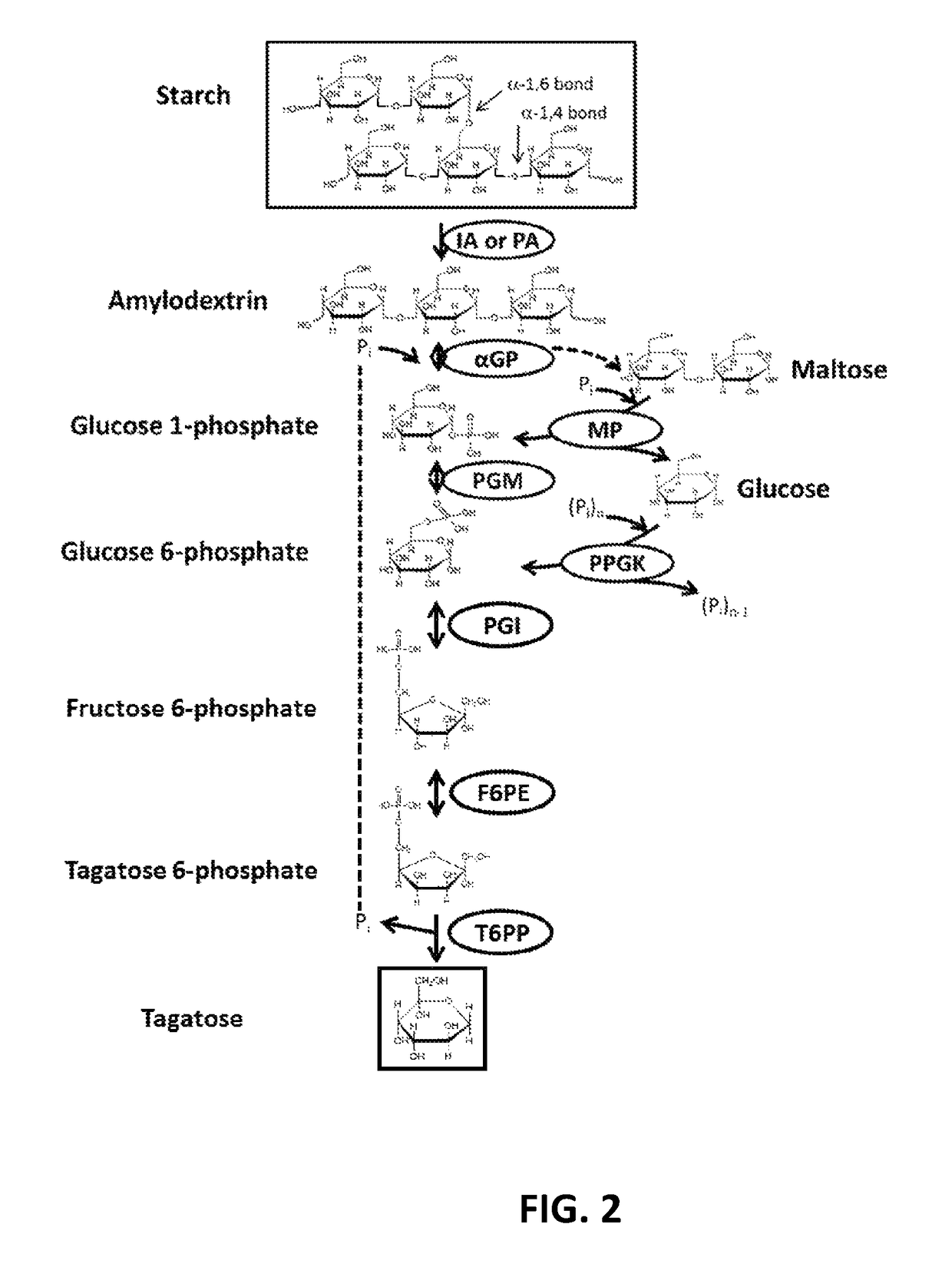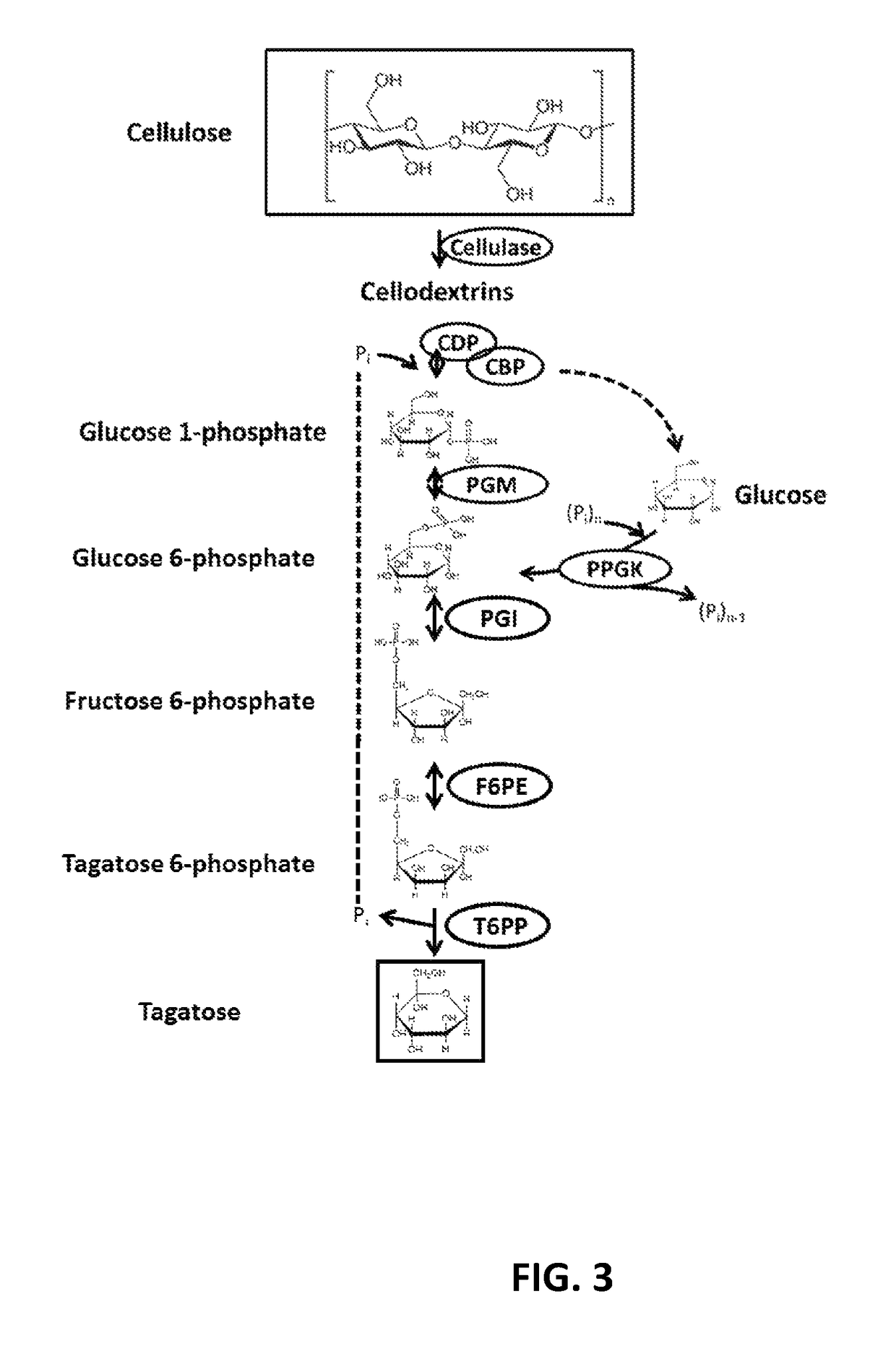Enzymatic production of D-tagatose
a technology of dtagatose and enzymes, which is applied in the field of preparing the sugar dtagatose, can solve the problems of low product yield, no practical alternative, and limited use of dtagatose as sweetener
- Summary
- Abstract
- Description
- Claims
- Application Information
AI Technical Summary
Benefits of technology
Problems solved by technology
Method used
Image
Examples
example 1
[0103]To validate the technical feasibility of the enzymatic biosynthesis of fructose 6-phosphate from starch, three enzymes were recombinantly expressed: alpha-glucan phosphorylase from T. maritima (Uniprot ID G4FEH8), phosphoglucomutase from Thermococcus kodakaraensis (Uniprot ID Q68BJ6), and phosphoisomerase from Clostridium thermocellum (Uniprot ID A3DBX9). The recombinant proteins were over-expressed in E. coli BL21 (DE3) and purified as described above.
[0104]A 0.20 mL reaction mixture containing 10 g / L soluble starch, 50 mM phosphate buffered saline pH 7.2, 5 mM MgCl2, 0.5 mM ZnCl2, 0.01 U of αGP, 0.01 U PGM, and 0.01 U PGI was incubated at 50° C. for 24 hours. The reaction was stopped via filtration of enzyme with a Vivaspin 2 concentrator (10,000 MWCO). The product, fructose 6-phosphate (F6P), was determined using a fructose 6-phosphate kinase (F6PK) / pyruvate dehydrogenase (PK) / lactate dehydrogenase (LD) coupled enzyme assay where a decrease in absorbance at 340 nm indicates...
example 2
[0105]Same tests as in Example 1 (other than reaction temperatures) were carried out from 40 to 80° C. It was found that 10 g / L soluble starch produced 0.9 g / L F6P at 40° C. and 3.6 g / L F6P at 80° C. after 40 hour reactions. These results suggest that increasing reaction temperature for this set of enzymes increased F6P yields, but too high temperature may impair some enzyme activity.
example 3
[0106]It was found that, at 80° C., an enzyme ratio of αGP:PGM:PGI of approximately 1:1:1 resulted in fast F6P generation. It was noted that the enzyme ratio did not influence final F6P concentration greatly if the reaction time was long enough. However, the enzyme ratio affects reaction rates and the total cost of enzymes used in the system.
PUM
| Property | Measurement | Unit |
|---|---|---|
| temperature | aaaaa | aaaaa |
| temperature | aaaaa | aaaaa |
| temperature | aaaaa | aaaaa |
Abstract
Description
Claims
Application Information
 Login to View More
Login to View More - R&D
- Intellectual Property
- Life Sciences
- Materials
- Tech Scout
- Unparalleled Data Quality
- Higher Quality Content
- 60% Fewer Hallucinations
Browse by: Latest US Patents, China's latest patents, Technical Efficacy Thesaurus, Application Domain, Technology Topic, Popular Technical Reports.
© 2025 PatSnap. All rights reserved.Legal|Privacy policy|Modern Slavery Act Transparency Statement|Sitemap|About US| Contact US: help@patsnap.com



